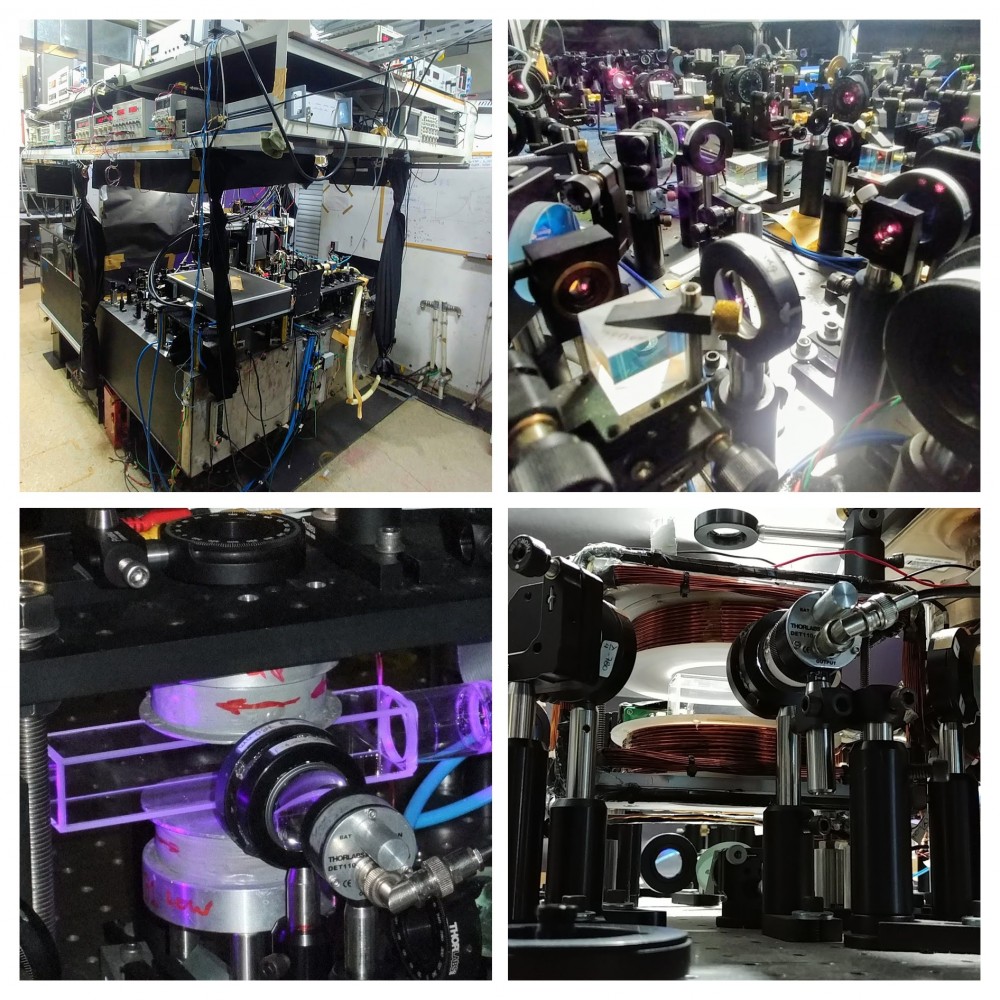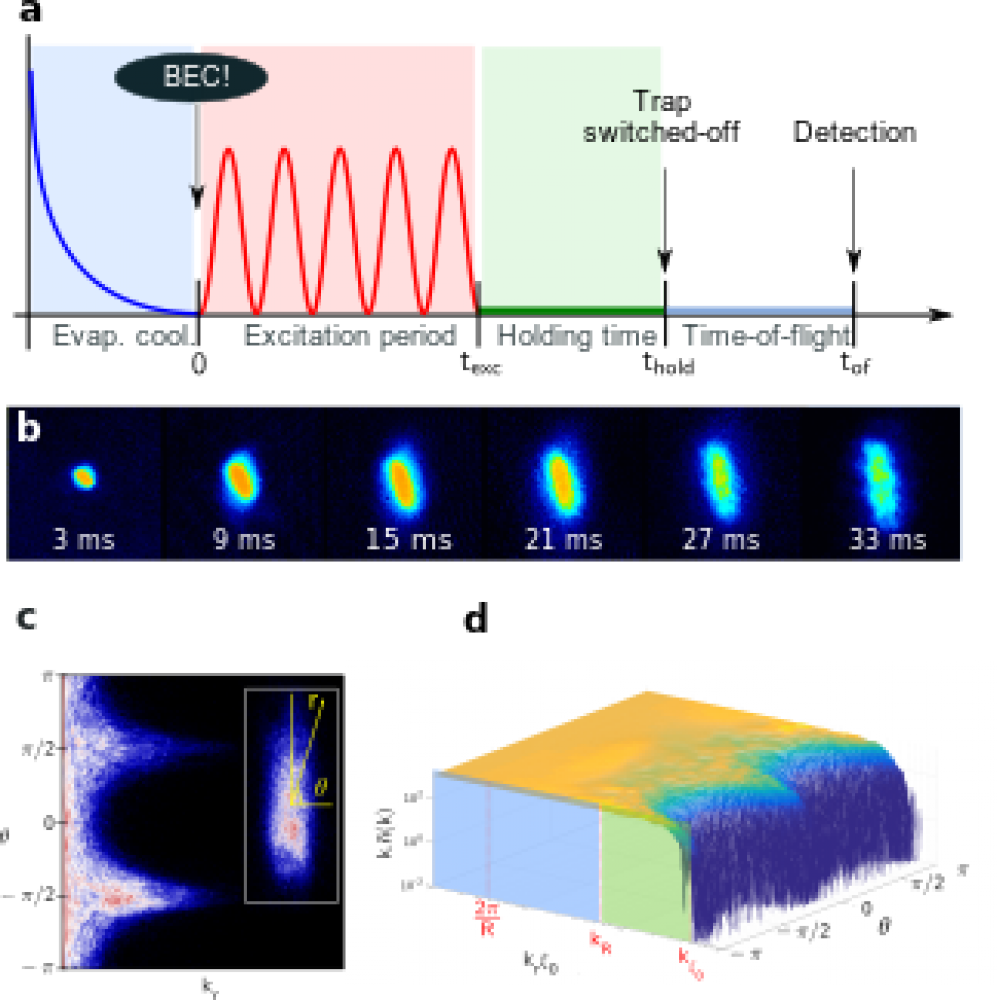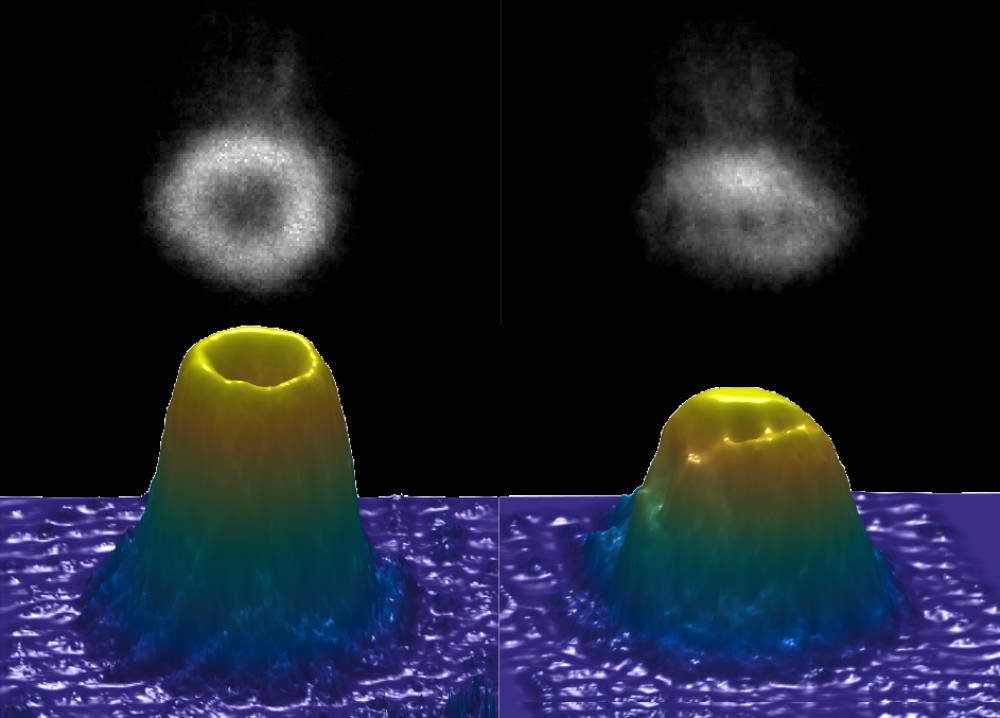Project Description
Bose-Einstein Condensates
No topo da lista entre os temas mais importantes da física moderna, os fluidos quânticos estimulam avanços em muitos ramos da ciência. É geralmente aceito que, devido à importância do tema, é essencial na formação de novos talentos científicos. Um dos tópicos principais em investigação nos nossos laboratórios trata de Turbulência Quântica e a Investigação de Vórtices em Superfluidos Atômicos.
The study of vortexes in condensates has never suffered from a lack of interest. Over the years, studies of new aspects, both of the formation and dynamics of vortices, were carried out. Recently, vortices were observed in our laboratories, through a new technique that consists of introducing an off-axis oscillation in the condensate.
Turbulência Quântica
Turbulent processes appear everywhere on Earth and in the cosmos. Turbulent fluids are crucial to sustaining life on Earth. For example, by spreading seeds over the earth, nutrients, heat, and homogenizing atmospheric gases. Another good example is the Earth's magnetic field, which is used for navigation and also acts as a barrier against harmful charged particles coming from the sun. It is created by cast iron rotating in turbulent flow in the Earth's core. Our daily experience with turbulence can be found in airplane flights, cloud movement patterns, or in the simple flow of a river. Furthermore, turbulence plays a critical role in the design and operation of most industrial processes, and is not restricted to the movement of fluids alone. For example, the human heart experiences filament turbulence just before it goes into fibrillation; electromagnetic waves occurring inside laboratory-produced plasmas can also be turbulent; and similar processes can occur in optical systems (turbulence of a ring laser cavity), optoelectronic systems such as a Mach-Zehnder feedback system, and also neural networks.

The integration between large and small scales that occurs in turbulent flows makes its study complex, especially due to the need to accommodate orders of magnitude of spatial extent. From the point of view of theoretical researchers, the non-linear equations that govern motion are difficult to solve due to the large range of scales involved in turbulence. The terms of the equations cannot be neglected, because the contribution of each one can vary along the scales of interest of the problem. This then requires numerical simulations of experimental and naturally occurring systems having extremely large domains that are also capable of solving the small dissipation-dominated scales in classical fluids. On the other hand, quantum fluids, such as superfluids, or superconductors, in addition to Bose-Einstein condensates, may present turbulent states that are different from their classical counterpart in terms of long-range quantum ordering. This ordering imposes quantum constraints on its dynamics, as measured by a non-zero order parameter. Specifically, all vorticity (magnetic field) in the case of Bose-Einstein superfluids and condensates (and superconductors) is limited to topological defects occurring in the order parameter of the system. These line-shaped structures, called quantized vortices due to continuity in the order parameter, quantify the flow circulation around each topological defect. Turbulence in quantum fluids exhibits a tangle of interacting quantized vortices, as originally envisioned by Feynman, which is quite distinct from the continuous vorticity distributions present in classical fluid turbulence.

Vórtices, turbulência e termodinâmica em condensados de Bose-Einstein
Our main research topic involving Bose-Einstein condensation in São Carlos is quantum turbulence. Ideas and methods to generate vortices and quantum turbulence are investigated. Important questions waiting for answers, such as: Why the state of turbulence suppresses aspect ratio of the expanding ballistic atomic cloud? Does this indicate the existence of a new hydrodynamic regime in atomic superfluids? How does a turbulent state decay? How can the size and finite number of atoms of the condensed samples influence a turbulent state?

Another research topic of great interest to the BEC 1 laboratory is the study of thermodynamic phenomena. In addition, we have carefully investigated the thermodynamic phase transition process in the critical temperature region looking for a more detailed and general understanding.
Finally, it is important to emphasize that long-range ordered quantum systems can exhibit turbulent behavior when out of equilibrium. The interaction of topological defects (quantized vortices) underlying quantum turbulence. Quantum turbulence at large scales can exhibit a granular behavior similar to classical turbulence occurring in a Newtonian fluid. It is known that, at scales smaller than typical inter-vortex spacing, the behavior is dominated by reconnections, generation of Kelvin waves, and the formation of quantified vortex rings. In addition to the significant advances that have taken place so far, there is certainly room for considerable progress. Another likely area of relevant research in the future may lie in carrying out experiments to individually test the terms of the different equations of motion proposed to describe the system, as has been done for the Navier-Stokes equation.

Members:
- Vanderlei S. Bagnato (Investigador principal – IFSC/USP)
- Gustavo D. Telles (Pesquisador permanente – IFSC/USP)
- Amilson R. Fritsch (Pós-doutor – IFSC/USP)
- Arnol D. G. Orozco (Pós-doutor – IFSC/USP)
- Michelle A. M. Armijos (Aluna de Pós-graduação – IFSC/USP)
- Sarah Sab (Aluna de Graduação – IFSC/USP)
- Leonardo L. da Silva (Aluno de Graduação – IFSC/USP)
- João Pedro G. Venassi (Aluno de Graduação – IFSC/USP)
- Vinicius B. Tafuri (Aluno de Graduação – IFSC/USP)
Collaboradores:
- Lucas Madeira (Pós-doutor – IFSC/USP)
- Giacomo Roati (Pesquisador nível 1, INO-CNR, e associado à: LENS e Un. Florence – Florença, Itália)
